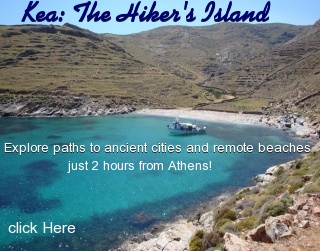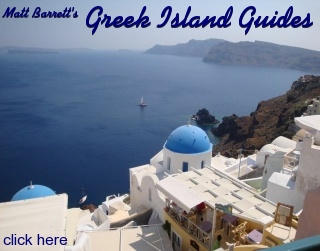
A Short
History of Nafplio
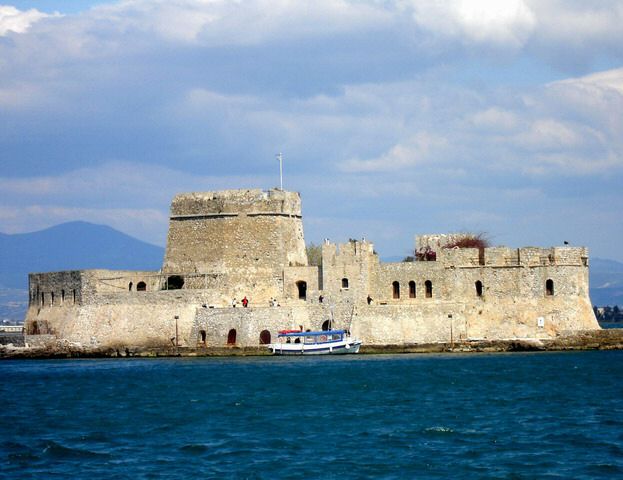 The city of Nafplio was the first capital
of the modern Greek state. Named after Nafplios, son of Poseidon, and home
of Palamidis, their local hero of the Trojan war and supposedly the inventor
of weights and measures, lighthouses, the first Greek alphabet and the
father of the Sophists. The small city state made the mistake of allying
with Sparta in the second Messenian War (685-688BC) and was destroyed by
Damokratis the king of Argos. The city of Nafplio was the first capital
of the modern Greek state. Named after Nafplios, son of Poseidon, and home
of Palamidis, their local hero of the Trojan war and supposedly the inventor
of weights and measures, lighthouses, the first Greek alphabet and the
father of the Sophists. The small city state made the mistake of allying
with Sparta in the second Messenian War (685-688BC) and was destroyed by
Damokratis the king of Argos.
Because of the strength of the fort that sits above the bay, the town of Nafplio became an important strategic and commercial center to the Byzantines from around the Sixth century AD. In 1203 Leon Sgouros, ruler of the city, conquered Argos and Corinth, and Larissa to the north, though it failed to successfully conquer Athens after a siege in 1204. |
 With the fall of Constantinople to the
Turks, the Franks, with the help of the Venetians captured the city and
nearly destroyed the fortress in the process. In the treaty the defenders
of the city were given the eastern side of the city, called the Romeiko
and allowed to follow their customs, while the Franks controlled the Akronafplia,
which was most of the city at the time. The Franks controlled the city
for 200 years and then sold it to the Venetians. The Venetians continued
the fortification of the upper town and completed their work in 1470. That
same year they built a fort on the small island in the center of the harbor
called the Bourtzi. To close the harbor the fort was linked by chains and
the town was known as Porto Cadenza, meaning Port of Chains. During this
period people flocked to the safety of the fortified city in fear of the
Turks and forced the expansion of the city into the lagoon between the
sea and the walls of the Akronaphlia. The new additions to the city was
surrounded with walls and many major buildings were erected including the
Church of Saint George. But these new walls didn't matter because in the
treaty with Suleiman the First, Nafplio was handed over to the Turks who
controlled the city for 100 years and made it the primary import/export
center for mainland Greece. With the fall of Constantinople to the
Turks, the Franks, with the help of the Venetians captured the city and
nearly destroyed the fortress in the process. In the treaty the defenders
of the city were given the eastern side of the city, called the Romeiko
and allowed to follow their customs, while the Franks controlled the Akronafplia,
which was most of the city at the time. The Franks controlled the city
for 200 years and then sold it to the Venetians. The Venetians continued
the fortification of the upper town and completed their work in 1470. That
same year they built a fort on the small island in the center of the harbor
called the Bourtzi. To close the harbor the fort was linked by chains and
the town was known as Porto Cadenza, meaning Port of Chains. During this
period people flocked to the safety of the fortified city in fear of the
Turks and forced the expansion of the city into the lagoon between the
sea and the walls of the Akronaphlia. The new additions to the city was
surrounded with walls and many major buildings were erected including the
Church of Saint George. But these new walls didn't matter because in the
treaty with Suleiman the First, Nafplio was handed over to the Turks who
controlled the city for 100 years and made it the primary import/export
center for mainland Greece. |
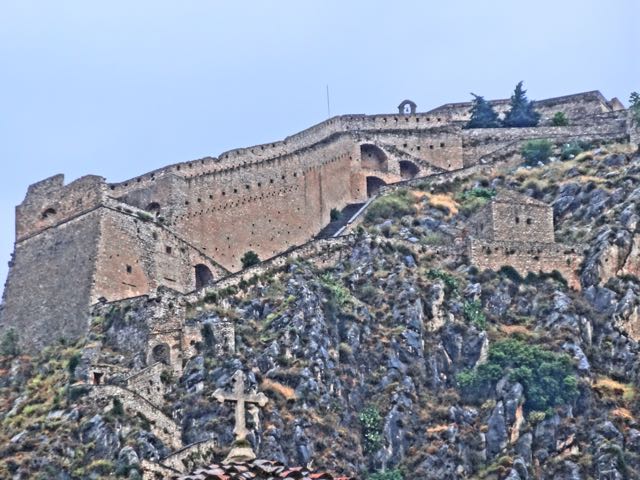 In 1686 the Turks surrendered the city
to a combined force of Venetians, Germans and Poles, lead by Vice Admiral
Morozini and this began a second period of Venetian rule in which massive
repairs were made to the fortress and the city including the construction
of the fortress in Palamidi. When the Peloponessos falls to the Venetians,
Nafplio becomes the capital. But after just thirty years the Turks once
again take control of the city, almost totally destroying it, looting it
and killing almost all its defenders. Most of the survivors chose to leave
and the city while the Turks built mosques, baths and the homes in the
eastern style which can still be seen. In 1686 the Turks surrendered the city
to a combined force of Venetians, Germans and Poles, lead by Vice Admiral
Morozini and this began a second period of Venetian rule in which massive
repairs were made to the fortress and the city including the construction
of the fortress in Palamidi. When the Peloponessos falls to the Venetians,
Nafplio becomes the capital. But after just thirty years the Turks once
again take control of the city, almost totally destroying it, looting it
and killing almost all its defenders. Most of the survivors chose to leave
and the city while the Turks built mosques, baths and the homes in the
eastern style which can still be seen.
In April of 1821 Greek chieftains and Philhellenes surrounded the city of Nafplio and liberated it from the Turks under the leadership of Theodore Kolokotronis. Nafplio became the center of activities which would result in the formation of Modern Greece. In 1823 it becomes the capital of the state which is then recognized by the world powers (England, France and Russia) in 1827. |
|
See also Matt Barrett's History of Greece |
|
Help Support Matt's Nafplio Pages |
|
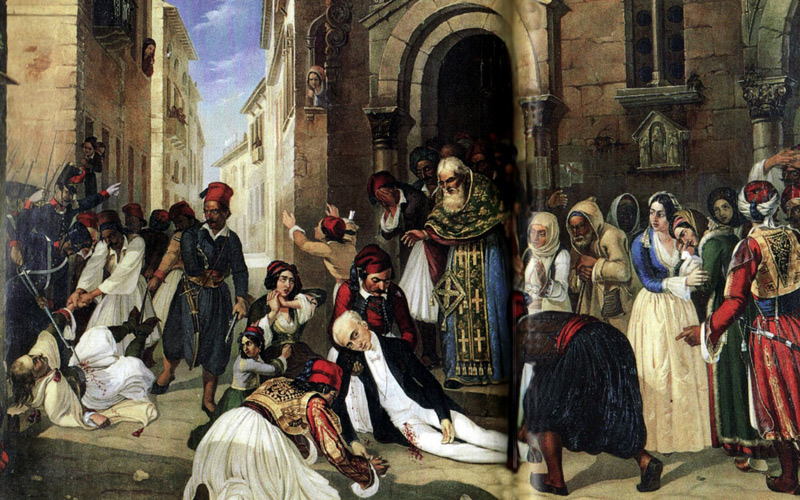 In January of 1828 Ioannis Kapodistrias
is recognized as the first governor and arrives in Naphlion. In 1831 King
Otto is chosen as the first King of Greece but a month later Kapodistrias
is murdered in the Church of Agios Spiridon.
In January of 1828 Ioannis Kapodistrias
is recognized as the first governor and arrives in Naphlion. In 1831 King
Otto is chosen as the first King of Greece but a month later Kapodistrias
is murdered in the Church of Agios Spiridon.
